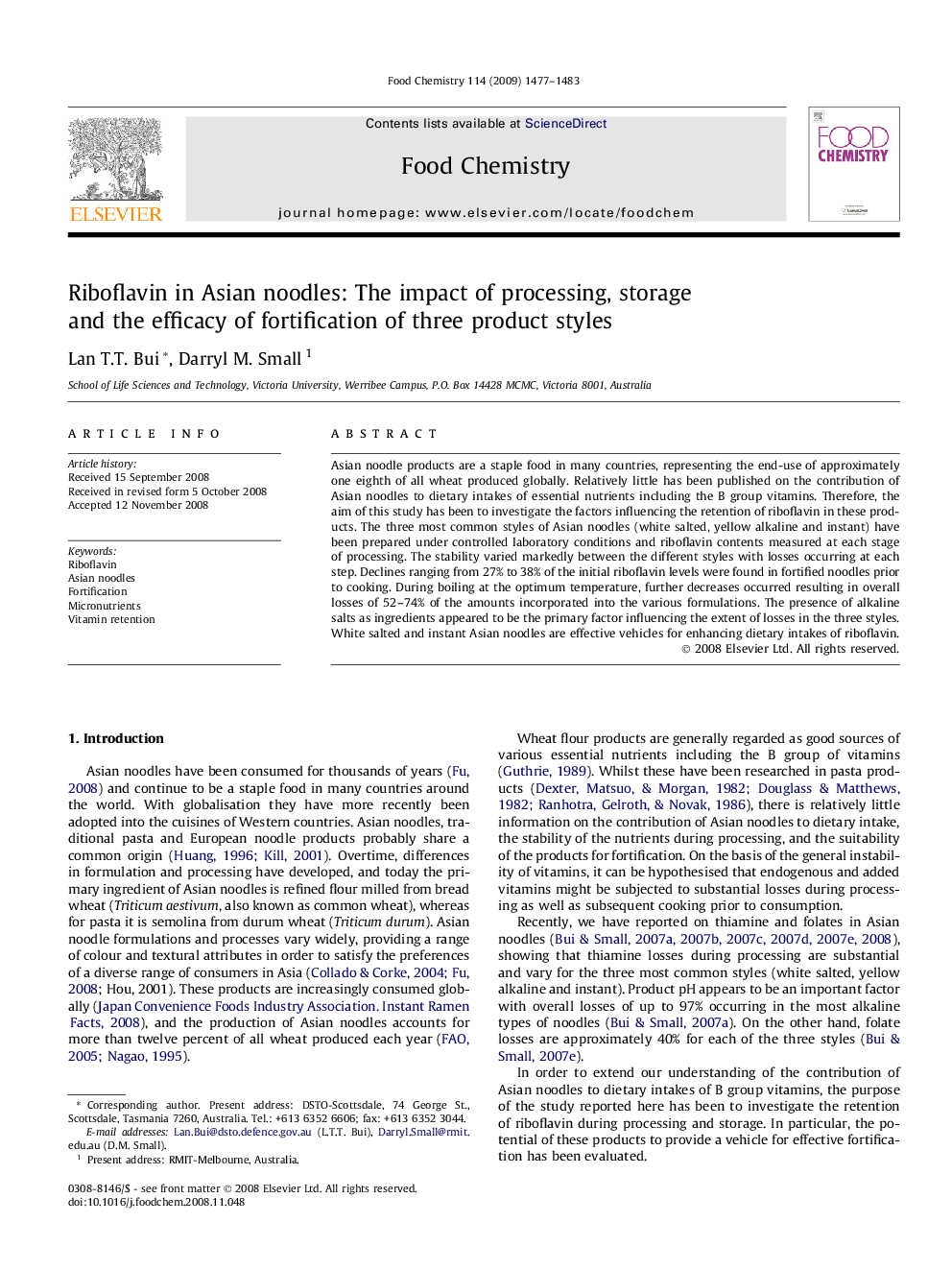| کد مقاله | کد نشریه | سال انتشار | مقاله انگلیسی | نسخه تمام متن |
|---|---|---|---|---|
| 1186258 | 963431 | 2009 | 7 صفحه PDF | دانلود رایگان |

Asian noodle products are a staple food in many countries, representing the end-use of approximately one eighth of all wheat produced globally. Relatively little has been published on the contribution of Asian noodles to dietary intakes of essential nutrients including the B group vitamins. Therefore, the aim of this study has been to investigate the factors influencing the retention of riboflavin in these products. The three most common styles of Asian noodles (white salted, yellow alkaline and instant) have been prepared under controlled laboratory conditions and riboflavin contents measured at each stage of processing. The stability varied markedly between the different styles with losses occurring at each step. Declines ranging from 27% to 38% of the initial riboflavin levels were found in fortified noodles prior to cooking. During boiling at the optimum temperature, further decreases occurred resulting in overall losses of 52–74% of the amounts incorporated into the various formulations. The presence of alkaline salts as ingredients appeared to be the primary factor influencing the extent of losses in the three styles. White salted and instant Asian noodles are effective vehicles for enhancing dietary intakes of riboflavin.
Journal: Food Chemistry - Volume 114, Issue 4, 15 June 2009, Pages 1477–1483